#the 5 levels of leadership: proven steps to maximize your potential
Text
Maximize Your Leadership Career Growth: 5 Situations Where a Career Coach Can Make a Difference
Yoshita Swarup Sharma
Actively building your leadership career is not an easy path. Leaders are busy in their work and rarely spend time planning and taking actions that will ease their career growth.
Is this true for you too? If yes, you may benefit from the services of a career coach. Here are five situations where a career coach can help you reach your goals faster:
1. Actively searching for a Job

A career coach can also walk you through the process of interview. Video recorded mock interviews will help in overcoming anxiety and building confidence to face an interview. You will be able to assess how you present yourself as a potential candidate and make course correction.
You will learn a structured way of answering probing questions and feel confident of putting your best foot forward, every single time.
If you are in the active job search mode, do you get anxious about appearing in interviews?
Do you think you need more preparedness before appearing for an interview with a coveted company?
Could you gain from clarity around what to say and how to say?
If your answer is yes then a career coach can definitely partner with you on this journey. She can help you assess your skills, interests, achievements, experiences and values to identify key aspects to highlight when talking about yourself and your fit with a particular opportunity.
2. Unhappy at the current workplace

Many leaders are dissatisfied with the current job/ role/ boss/ company but learn to live with the feeling. They are at a stage where their family responsibilities and financial liabilities make them risk averse.
Do this quick check. Score yourself on a scale of 1 to 10 how you feel early morning at the thought of going to work. If you scored below 5, then it’s time to consider a change.
Are you facing challenges at your workplace? Maybe you are stuck in a toxic work environment and want a way out but don’t know where to start. A career coaching conversation will help you.
The coach helps you discover and articulate what is bothering you. You can explore your options by looking at the situation from all angles in a safe, non-judgemental space.
A coaching conversation will shift you from confusion to clarity and lift the feeling of unease off your shoulders. You will get an idea of what your baby steps need to be.
3. Unclear about your strengths and energizers.

At senior leadership levels, career change has to be aligned with who you are as a person. You have proven yourself enough. You probably want to do work that makes you happy, keeps you engaged, and makes you deliver at your peak potential. How to gauge opportunities this way?
Do you know your areas of strength? Are you aware about your energizers that keep you going even in times of pressure? What make you deliver your best work?
It is important to commit to your success and keep showing up for yourself. Drop by Drop, you will notice how far you have come.
Talking you career coach can help you become aware of your strengths, values & energisers. You will feel valued, supported, and more connected to the work you do.
This will lead you to find opportunities aligned to the person that you are and greatly serve your future career success and happiness.
4. Have to choose between 2 job offers.

Mohina is considering two job offers— she is torn between the prestige and stability offered by the multinational corporation and the potential for creativity and flexibility in the start-up.
It is not unusual to have parallel conversations going on with more than one prospective employer. What if two of them make an offer?
A career coach can help you assess various factors through a structured decision-making process and prioritize these factors based on your individual values, needs, and aspirations.
They may ask you questions such as:
What are your long-term career goals and how do these two opportunities align with them?
Mohina wanted more stability but she aligned more with flexibility in his job.
How important is work-life balance to you, and which company’s culture seems to support that?
Mohina wanted to spend more time with her family.
Are you seeking a structured and hierarchical organization or a more entrepreneurial and dynamic environment?
Mohina preferred structured but not rigid.
Which opportunity offers the potential for professional growth, learning, and skill development that aligns with your interests?
Mohina had clarity to opt for job option 2 as it aligned with her interests and approach towards job performance.
Through coaching conversations you can identify and prioritize what matters most to you.You can reflect on your past experiences and the environments in which you have thrived. The coach might also help you envision your desired future career trajectory and evaluate how each job offer contributes to that vision.
You will just feel more settled and confident about the choice you finally make, if you have gone through a process such as the one mentioned above.
5. Don’t know where to start

Sometimes leaders stay with the same organization for a long period of time, maybe even more than a decade. Things have gone well and they have grown every few years. Until they hit a plateau and it becomes clear that no further career progress is possible in the current company.
If you have been out of the job market, you may not know where to begin the process of searching for a new job. A career coach can play a valuable role in enabling leaders to build the elements of a strong job search plan.
They can strategically review your resume and your linked in profile as well as help you identify organizations and roles that would align with your long term career vision. They can support you in developing an action plan and hold you accountable by tracking progress.
It is like having a partner who is invested in your success!
Now you understand the ways in which a career coach can support you in growing your leadership career.
If you want to be intentional about your career and don’t want to leave things to chance, then this may be a good time to connect with a career coach.
Also, if you can think of a friend who might benefit from this article, do share it with them.
Joy & Abundance to you.
Yoshita Swarup Sharma:
Founder & CEO – A Brighter Life | ICF Certified Executive and Career Coach | Leadership facilitator | NLP Practitioner| Inner Transformation Specialist
Yoshita Swarup Sharma, CEO & Co-Founder of A Brighter Life, is an internationally certified executive and career coach (PCC). For the last eleven years, she has coached several senior leaders and CXO across the variety of industries and organizations. Recently she was awarded as one of the most influential coaching leaders of India by the World HRD Congress. She’s a leadership facilitator, advanced NLP Practitioner and a specialist on personal transformation. She writes her blog from her own experiences and reflections . She brings with her 23 years of overall work experience and has previously worked as a Marketing professional in corporates like Coca-Cola, Dabur and Ranbaxy She’s also a Kathak student and co-founder of Subah, A Covid Widow support group
Connect with Yoshita Swarup Sharma
0 notes
Text
Download The 5 Levels of Leadership: Proven Steps to Maximize Your Potential BY John C. Maxwell
Download Or Read PDF The 5 Levels of Leadership: Proven Steps to Maximize Your Potential - John C. Maxwell Free Full Pages Online With Audiobook.

[*] Download PDF Here => The 5 Levels of Leadership: Proven Steps to Maximize Your Potential
[*] Read PDF Here => The 5 Levels of Leadership: Proven Steps to Maximize Your Potential
True leadership isn't a matter of having a certain job or title. In fact, being chosen for a position is only the first of the five levels every effective leader achieves. In his seminal work, leadership guru John Maxwell presents readers with the five stages of leadership and explains how to maximize each one to become more influential, respected and successful: 1. Position - People follow because they have to. 2. Permission - People follow because they want to. 3. Production - People follow because of what you have done for the organization. 4. People Development - People follow because of what you have done for them personally. 5. Pinnacle - People follow because of who you are and what you represent.
0 notes
Text
Read The 5 Levels of Leadership: Proven Steps to Maximize Your Potential -- John C. Maxwell
Download Or Read PDF The 5 Levels of Leadership: Proven Steps to Maximize Your Potential - John C. Maxwell Free Full Pages Online With Audiobook.

[*] Download PDF Here => The 5 Levels of Leadership: Proven Steps to Maximize Your Potential
[*] Read PDF Here => The 5 Levels of Leadership: Proven Steps to Maximize Your Potential
0 notes
Text
Download PDF The 5 Levels of Leadership: Proven Steps to Maximize Your Potential PDF BY John C. Maxwell
Download Or Read PDF The 5 Levels of Leadership: Proven Steps to Maximize Your Potential - John C. Maxwell Free Full Pages Online With Audiobook.

[*] Download PDF Here => The 5 Levels of Leadership: Proven Steps to Maximize Your Potential
[*] Read PDF Here => The 5 Levels of Leadership: Proven Steps to Maximize Your Potential
0 notes
Link
audiobooks free The 5 Levels of Leadership by John C. Maxwell
best free audio books The 5 Levels of Leadership | free audio books mp3 The 5 Levels of Leadership | full length audio books free The 5 Levels of Leadership | free audiobook downloads The 5 Levels of Leadership
Written By: John C. Maxwell
Narrated By: John C. Maxwell
Publisher: Hachette Book Group USA
Date: October 2011
Duration: 7 hours 13 minutes
#The 5 Levels of Leadership: Proven Steps to Maximize Your Potential#The 5 Levels of Leadership Audiobook#Audiobook#Business & Economics#John C. Maxwell#October 2011#bestfreeaudiobooks#freeaudiobooksmp3#fulllengthaudiobooksfree#freeaudiobookdownloads
0 notes
Text
How To Develop People As Leaders
It’s not enough just to recruit good team members. A leader must understand how those people best fit on the team and put them there. To do that, he must have a clear picture of each person’s strengths and weakness and understand how they fit the needs of the team.
Some leaders take a counseling approach to developing people. By that I mean that they focus on what the person is doing poorly or wrong, and they focus their attention on helping them make corrections in those areas. If you want to develop people, though, you must help them discover and build upon their strengths. That’s where people have the most potential to grow. Helping to develop their strengths is the only way to help leaders become world-class.
Modeling—Showing Others How to Lead
Few things are worse than the teacher who is unteachable. As a leader, you will reproduce what you are. For example, if you remain teachable, your people will remain teachable. If your mind is closed, the minds of the people you mentor will probably be closed. You set the tone for those who follow you.
One of the secrets of developing leaders is to have the people you are mentoring beside you as often as possible so that they can learn how you think and act in a variety of situations. Here are the things I believe you must display, or model, with integrity in order to develop people :
Authenticity—This is the foundation for developing people.
Servanthood—This is the soul for developing people.
Growth—This is the measurement for developing people.
Excellence—This is the standard for developing people.
Passion—This is the fuel for developing people.
Success—This is the purpose for developing people.
Your goal at first is for them to observe as you model leadership. But as quickly as you can, move on to the next phase of development.
Equipping—Helping Others Do Their Jobs Well
It’s not enough to simply tell people what they need to do. That’s not developing their potential. Instead, a leader must help them to do their jobs and do them well. The best method I’ve ever found is a five-step equipping process. Here’s how it works:
Step 1—I do it (competence).
Step 2—I do it and you are with me (demonstration).
Step 3—You do it and I am with you (coaching).
Step 4—You do it (empowerment).
Step 5—You do it and someone is with you (reproduction).
If you adopt this method, not only will you equip leaders, you will begin teaching them how to equip others, which sets them up to become great leaders themselves.
Developing—Teaching Them to Do Life Well
If the only thing you’re helping a new leader learn is how to get ahead in the workplace, you’re not truly developing that person to succeed, because there’s a lot more to life than work and career. The Center for Creative Leadership has observed that three key elements drive leadership development in others.
1. Assessment. As a great leader, you should be continually on the lookout for holes in the life skills of someone you are leading and developing. Ask yourself:
Where does this person seem to be failing?
Where are this person’s blind spots?
What does my intuition tell me is “off” in this person’s thinking?
Why isn’t this person reaching his or her potential?
Who might be leading this person in a wrong direction?
When does this person do well?
When does this person stumble?
What telltale clues can I find that give me insight into where this person needs help?
Where is this person’s sweet spot?
A good leader is always on the lookout for a person’s weaknesses and wrong thinking—not to exploit that person, but to strengthen and help him or her succeed.
2. Challenge. If you’ve done your work to build a strong relationship with the people on your team, and you’ve proven yourself by demonstrating success and modeling productivity, there is a very good chance that people on your team will buy into your leadership and accept a challenge from you to improve. To present that challenge, ask the people you lead to do the following:
Read books related to their areas of strength.
Attend conferences that will inspire them.
Take on new and challenging tasks in their sweet spot.
Practice difficult disciplines that slowly build character.
Meet with you on a regular basis for mentoring.
The idea is to challenge them in the areas of their lives where you see that they need improvement. Just be sure to gain their permission to do it before starting the process.
3. Support. Nobody gets ahead in life without the help and support of other people. One of the great privileges of leading on the People Development level is helping new leaders navigate through life’s difficulties.
It’s difficult for people to make the most of their leadership potential when the rest of their lives is a wreck. Good life skills help a person to create a strong foundation upon which to build a family, career, and spiritual life. I admit that I get the greatest joy from seeing people reach their leadership potential, but it is also very satisfying to know that I’ve helped someone to enjoy life and live it well.
Empowering—Enabling People to Succeed
Empowerment means helping people to see what they can do without your help, and releasing them to do it. As you release tasks to the leaders you’re developing, you need to trust them, believe in them, and hold them accountable. Trust creates a bond between you and them. When I trust the people I empower, I put a little piece of myself into their hands. When they respond in kind, the shared vulnerability creates a bond that deepens the relationship.
When you believe in people, you motivate them. And the belief must be genuine. Pretending you believe provides no passion for empowerment. Nor can you borrow the belief from someone else, because it will have no power. You must draw upon the experiences you have with people and the growth that they have already exhibited. Besides helping them, it will also help you. If you don’t believe in them, you won’t be able to let go and release them to achieve.
When you hold people accountable, you increase their chances for positive results. Why? Because everyone finds focus in goals. They work better toward deadlines. And they usually rise to the level of a leader’s expectations. Without accountability, people drift. With it, they achieve results.
Measuring—Evaluating Those Whom You Develop to Maximize Their Efforts
Many people look at winning sports teams and attribute the team’s success to how knowledgeable the coach is. But games aren’t won according to what the coach knows. Games are won according to what the coach’s players have learned. How can you measure that as a leader? By judging how independently your team members are able to function.
The Center for Organizational Leadership in Cincinnati, Ohio, suggests that leaders should employ different degrees of empowerment, based on how independently a team member can work. Here are the six they recognize, from least independent to most independent:
Look into it. Report. I’ll decide what to do.
Look into it. Report alternatives with pros and cons and your recommendation.
Look into it. Let me know what you intend to do, but don’t do it unless I say yes.
Look into it. Let me know what you intend to do and do it unless I say no.
Take action. Let me know what you did.
Take action. No further contact required.
As you work in People Development with team members, you can measure where they are based on how they typically function according to those six benchmarks. Obviously, your goal is to help them become leaders who can take action without needing your input. When the leaders you develop reach that benchmark, then they—and you—are ready to lead them at the highest level of leadership.
0 notes
Text
2020 NFL draft live updates
6:27 AM IST

NFL NationESPN
The 2020 NFL draft has officially started, and we’re providing live updates on the pros and cons for each first-round pick. The Cincinnati Bengals started off the draft by selecting LSU quarterback Joe Burrow, who won a national championship with the Tigers in January.
We’re also tracking all 255 picks for Rounds 1-7, and you also can see all of the best available draft prospects in the 2020 class. Check out ESPN draft expert Mel Kiper Jr.’s final mock draft here.
The draft continues with Rounds 2 and 3 on Friday and Rounds 4 through 7 on Saturday. The draft will be broadcast on ABC, ESPN, the ESPN App and NFL Network.
How does your team’s first-round selection fit his team? Our NFL Nation reporters break it all down:
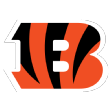
Joe Burrow, QB, LSU | Highlights
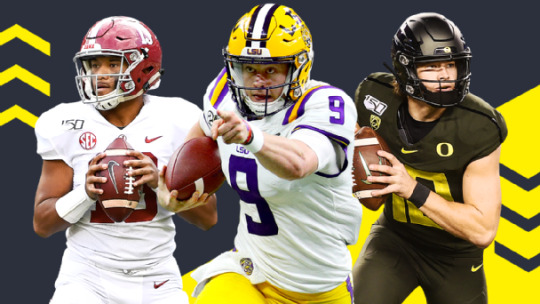
• DraftCast » | Best available prospects »
• Pros and cons of every draft pick »
• Round 1 trade tracker » | Draft order »
• Fantasy spin » | Social reactions »
• Full class rankings from Scouts Inc. »
More NFL draft coverage »
Why they picked him: The Bengals were in the market for their next cornerstone quarterback and have that in Burrow. His biggest attributes are ones the Bengals are seeking at the position: pre-snap decision-making, timing and accuracy (76.3%). He can extend plays and is effective outside of the pocket. Burrow also thrives when the protection collapses. His 82.6 QBR when pressured led all qualifying FBS quarterbacks in 2019 by a wide margin. Cincinnati has its successor to Andy Dalton after a nine-year run. In 2019, the Bengals were 28th in the league in yards per play and 29th in points per drive. Those numbers should improve under Burrow, who threw for 5,671 yards and 60 touchdowns last season, leading LSU to a 15-0 record.
Biggest question: Does Burrow have the arm strength to succeed in the NFL? The Bengals had some questions about that when watching the early part of Burrow’s 2019 tape. But Burrow completed 56.4% of his passes of 20 air yards or more, according to ESPN Stats & Information research, the second highest among qualifying FBS quarterbacks. — Ben Baby
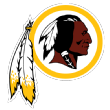
Chase Young, DE, Ohio State | Highlights
Why they picked him: Young is considered a high-impact player who can affect all three levels of the defense. Young, who had 16.5 sacks in 2019 and 30.5 in his career at Ohio State, provides Washington with something it hasn’t had in a long time on defense: elite potential. Under coach Ron Rivera, Washington has a chance to build a strong defense. The Redskins already have four first-round picks up front (Jonathan Allen, Daron Payne, Montez Sweat, Ryan Kerrigan), and an edge rusher such as Young will provide tremendous luxury — especially on third downs. Last season, Washington ranked 21st in sacks per pass attempt on third down and was last in conversion percentage. The Redskins love Young’s pass-rush instincts and that he takes no false steps, allowing him to maximize his burst off the line. Their scouting report says he uses his hands and feet well, displaying efficient movement.
Biggest question: What jersey number will he wear? There aren’t many questions aside from whether he can live up to the pre-draft hype and become this year’s “generational player.” How long will it take to make an impact? While some fans wondered why he had no sacks in his final three games as a Buckeye, the Redskins were not worried. One member of the organization said he watched film of those games because of those questions, saw Young still making an impact and said of skeptics: “OK, cool.” The Redskins still have questions in the secondary, and it’s safe to wonder how much the front seven can clean up in one season. — John Keim

Jeff Okudah, CB, Ohio State | Highlights
Why they picked him: Cornerback is Detroit’s biggest need after the trade of Darius Slay to Philadelphia. While the Lions signed CB Desmond Trufant in free agency and feel good about the long-term prospects of Amani Oruwariye, Okudah has the potential to be a shutdown corner sooner than later. He can be a man-press corner, which fits coach Matt Patricia’s defense. He also has good speed (4.48 seconds in the 40-yard dash at the scouting combine, 12th among all corners) and closing ability to stay with almost any receiver. He’s as ready to play right away as any corner in the draft, and at a position where rookies usually struggle.
Biggest question: While he’s in a better position than most corners coming into the league, it will still be an adjustment. Without offseason workouts against wide receivers Kenny Golladay and Marvin Jones Jr., it could be a situation in which Okudah will be learning on the fly throughout portions of the season. Considering the receivers he might be asked to cover (Davante Adams in Green Bay and Adam Thielen in Minnesota) and the quarterbacks he will likely face (Tom Brady, Philip Rivers, Aaron Rodgers, Deshaun Watson and Drew Brees are all on the schedule), he could have some rough moments as he figures the pro game out. — Mike Rothstein

Andrew Thomas, OT, Georgia | Highlights
Why they picked him: The Giants needed to protect their investments in quarterback Daniel Jones and running back Saquon Barkley. As general manager Dave Gettleman said recently, “It’s very, very difficult for Saquon to run the ball if he doesn’t have holes. It’s going to be difficult for Daniel to throw the ball when he’s on his back.” It was imperative that Gettleman fix the offensive line this offseason. It was his top priority upon taking the job two years ago, and there still had not been much progress. The hope is that Thomas, considered a safe bet with upside, can protect Jones’ blind side for much of the next decade. He can start at right tackle if the Giants so desire and eventually move over to left tackle. Thomas is also an ideal fit in what offensive coordinator Jason Garrett wants to do with getting his linemen on the move and to the second level.
Biggest question: Was Thomas the best tackle available? Personnel evaluators were all over the board with the top four tackles, and the Giants had their pick at No. 4. They deemed Thomas to be the top overall option, despite a critique from one offensive line coach that he was “not an ass-kicker.” His 21 bench-press reps at the combine only solidified that assessment. It was a pedestrian number for a lineman. Still, the Giants had him as their top tackle, but he did finish last among the top four tackles (although not by much) in an ESPN poll of 11 evaluators. — Jordan Raanan
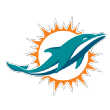
Tua Tagovailoa, QB, Alabama | Highlights
Why they picked him: The Dolphins haven’t had a Pro Bowl quarterback in 24 years (Dan Marino), and they desperately need Tagovailoa to lead their rebuild. With Burrow off the board at No. 1, the Dolphins took a swing at the most efficient quarterback in college football history in Tagovailoa. He has the accuracy, leadership qualities, anticipation and “it factor” — all things that Dolphins general manager Chris Grier and coach Brian Flores prioritized in their quarterback search. Tagovailoa has the charisma and talent to lead the Dolphins back to relevance in the AFC.
Biggest question: Will Tagovailoa stay healthy in the NFL after an injury-filled college career? Tagovailoa might have challenged for the No. 1 overall pick without the health issues and durability question marks. But Tagovailoa has suffered multiple injuries, including a dislocated right hip and posterior wall fracture in November that he has been rehabbing from throughout the winter and spring. Tagovailoa’s doctors say he will be 100% by the start of training camp, but the bigger question is how long he can last in the NFL. — Cameron Wolfe

Justin Herbert, QB, Oregon | Highlights
play
1:34
Justin Herbert explains how he’s feeling after being taken by the Chargers and what made him worried about his chances with Los Angeles.
Why they picked him: The Chargers needed a quarterback after Philip Rivers departed in free agency after 16 seasons. After the Dolphins selected Alabama quarterback Tua Tagovailoa with the No. 5 pick, it became almost certain the Chargers would take Herbert at No. 6. A proven winner at Oregon, Herbert has great arm strength and is agile outside of the pocket. From the 2018 to 2019 season, Herbert had the sixth-highest increase in completion percentage, jumping from 59% to 67%. He joins an offense that has established weapons in receivers Keenan Allen and Mike Williams, as well as tight end Hunter Henry.
Biggest question: Can Herbert start as a rookie? Herbert struggled in his final four regular-season games at Oregon, throwing four interceptions. It’s uncertain if he will be able to immediately adapt to the speed of the NFL, particularly when it comes to making fast decisions and getting rid of the football. The Chargers could start veteran Tyrod Taylor until Herbert is ready to take over. — Lindsey Thiry
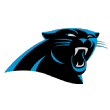
Derrick Brown, DT, Auburn | Highlights
Why they picked him: Carolina has only two defensive tackles on its roster in Kawann Short and Woodrow Hamilton, so no position has a bigger need. Put Brown and his run-stopping ability next to Pro Bowler Short and his pass-rushing ability, and the middle of the defense will be as stout as any in the NFL. Opponents literally ran away from Brown’s side at Auburn.
Biggest question: Brown didn’t have a great showing at the combine and his inside push on the pass rush needs improving. He gets by on sheer power and size. This is nitpicking, though, because there is no better run-stopper in the draft. — David Newton

Isaiah Simmons, OLB, Clemson | Highlights
Why they picked him: This was about as much of a no-brainer as there’ll be in this year’s draft. Simmons is widely considered the best defensive prospect in the draft and he fell to the Cardinals for no other reason than other teams had needs elsewhere, most of which were on offense. He’s the ideal complement for pass-rusher Chandler Jones and helps the Cardinals take a major step in their defensive rebuild.
Biggest question: Whose spot is he going to take? The Cardinals spent free agency rebuilding the front seven of the defense. Simmons continues that, but whose snaps will he take? He can compete with Devon Kennard at outside linebacker or for one of the inside linebacker spots. — Josh Weinfuss
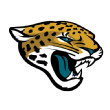
CJ Henderson, CB, Florida | Highlights
2 Related
Why they picked him: Cornerback is arguably the Jaguars’ top need after they traded away Jalen Ramsey and A.J. Bouye in the past seven months. The Jaguars signed Rashaan Melvin in free agency after failing to land Darqueze Dennard but needed to get better opposite Tre Herndon, who stepped into the starting role when Ramsey was traded last October. Henderson is regarded by some analysts as a better cover man than Jeff Okudah, the third overall pick by the Detroit Lions. The Jaguars have to play Deshaun Watson and Philip Rivers twice, plus here’s a partial list of the other quarterbacks they will face this season: Ben Roethlisberger, Joe Burrow, Kirk Cousins, Aaron Rodgers, Baker Mayfield and Matthew Stafford. The Jaguars had to address this spot.
Biggest question: While Henderson has gotten rave reviews for his coverage ability, there are questions about his willingness to help in run support and his consistency. He’s still also learning the position because he didn’t start playing cornerback until his senior year of high school. Communication on the field was an issue at Florida, too, so that’s something defensive coordinator Todd Wash is going to have to get him to improve, especially with what looks to be an unusual offseason. — Michael DiRocco
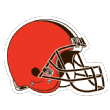
Jedrick Wills Jr., OT, Alabama | Highlights
Why they picked him: The Browns had to address pass protection after quarterback Baker Mayfield was sacked more often than any AFC quarterback per passing attempt last season. In Wills, Cleveland presumably gets its left tackle of the future to pair with what they hope is still its franchise quarterback in Mayfield. Wills did play right tackle for Alabama, but that’s in part because he was protecting the blind side of lefty passer Tua Tagovailoa. The additions of Wills and free-agent signee Jack Conklin have the potential to turn offensive tackle in Cleveland from a weakness to a strength.
Biggest question: New general manager Andrew Berry has said he believes that in the modern game, there’s essentially no difference between playing right and left tackle. Still, with Conklin signed long term to man the right side, Wills faces the challenge of making the adjustment of going to the left side. — Jake Trotter
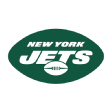
Mekhi Becton, OT, Louisville | Highlights
play
0:48
Rich Cimini breaks down whether the Jets’ selection of Mekhi Becton at 11 was the right choice.
Why they picked him: Somewhere in Southern California, quarterback Sam Darnold is smiling. Even though the Jets added four new linemen in free agency, they needed a long-term anchor to protect their most valuable investment. Becton is that guy. He is a monster size at 6-foot-7, 364 pounds, and he plays like a man who is 100 pounds lighter. His presence at left or right tackle will improve the running game. Running back Le’Veon Bell is happy too.
Biggest question: Becton’s drug test at the scouting combine was flagged by the league. It won’t affect his playing status, assuming it doesn’t happen again, but it certainly raises questions about his decision-making. Was it a red flag or an isolated mistake? Some scouts also have expressed concern about his weight. — Rich Cimini

Henry Ruggs III, WR, Alabama | Highlights
Why they picked him: Speed. Pure, unadulterated speed. Because with all three of the consensus top three wideouts still on the board, the Raiders went with the fastest player at the scouting combine (a nod to the late team owner Al Davis, perhaps?) as Ruggs ran a 4.27-second 40-yard dash. Coach Jon Gruden realizes that to battle the Super Bowl champion Kansas City Chiefs in the AFC West, he needs a similar team, a fast one. And in Ruggs, he has a complement to Kansas City’s Tyreek Hill. He hopes.
Biggest question: Ruggs might not be as a polished a pass-catcher as either teammate Jerry Jeudy or Oklahoma’s CeeDee Lamb, so there will be a learning curve, so to speak. And at 6 feet, 195 pounds, he will have to be more physical coming off press coverage at the line. Only five of 30 receivers taken in the first round over the previous 10 drafts had 1,000-yard receiving seasons as a rookie. Ruggs had a career-high 746 yards receiving last season, averaging 18.7 yards per catch. — Paul Gutierrez
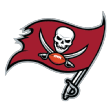
13. Tampa Bay Buccaneers (from the Indianapolis Colts via the San Francisco 49ers)
Tristan Wirfs, OT, Iowa | Highlights
Why they picked him: The Bucs have a soon-to-be 43-year-old quarterback in Tom Brady, and Wirfs will have a big role in protecting him. They did not re-sign longtime starting right tackle Demar Dotson this offseason, either. The Bucs’ offensive line also gave up 47 sacks in 2019. Wirfs can step in right away and take over for Dotson. His skills are off the charts, clocking a 4.85-second 40 at 6-foot-3, 320 pounds at the NFL combine.
Biggest question: There aren’t many with Wirfs. Sustaining blocks and improving in his vertical pass sets will be key for him to excel in coach Bruce Arians’ passing attack. — Jenna Laine
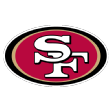
Javon Kinlaw, DT, South Carolina | Highlights
Why they picked him: The 49ers traded DeForest Buckner to the Colts for the 13th pick and, after a small move down, used that pick to land his replacement. Niners coach Kyle Shanahan and general manager John Lynch have not been shy about putting resources into building a dominant defensive line. Lynch has talked often about “strengthening a strength,” and their strength is the defensive line. Kinlaw will be asked to replace Buckner at the 3-technique spot as he joins a loaded defensive line. As a bonus, San Francisco will have Kinlaw under team control at a fraction of the cost of Buckner.
Biggest question: Kinlaw will cost far less, but will he produce anywhere near the level of Buckner? Not only was Buckner productive for the Niners, he also was extremely durable. Buckner missed just one game in four seasons, playing the third-most snaps in the league among defensive linemen during that time. He recorded 28.5 sacks in the regular season. Kinlaw has dealt with knee tendinitis that kept him out of a full week at the Senior Bowl. The Niners will need instant impact from him to remain Super Bowl contenders, so being healthy and adapting quickly will be paramount. — Nick Wagoner

Jerry Jeudy, WR, Alabama | Highlights
play
0:47
Jeff Legwold explains why the Broncos made the right call in taking Jerry Jeudy with the 15th pick in the 2020 NFL draft.
Why they picked him: There might have been no bigger need on the Broncos’ depth chart given Emmanuel Sanders didn’t play for the team after October and still finished second among the team’s wide receivers in catches with 30. Jeudy’s route running, speed (4.45 in the 40-yard dash at the scouting combine) and body control make him a dangerous playmaker. He lined up more in the slot last season than any other spot in the formation, but he can play multiple spots at wideout in the Broncos’ offense and should be a starter from Day 1.
Biggest question: Like many top-end college receivers, Jeudy hasn’t been challenged very often at the line of scrimmage. That means the more physical cornerbacks in the NFL will force him to adjust and be a little more active in getting the defensive backs’ hands off him. But his meticulous routes and elite speed will be a challenge for the defensive backs, as well. Also, he had a knee issue — he had injured a meniscus in his college career — that some teams gave a long look at, but for many teams, he was still the top receiver available in the draft.– Jeff Legwold
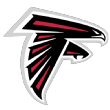
A.J. Terrell, CB, Clemson | Highlights
Why they picked him: The Falcons needed a starting-caliber cornerback after releasing Pro Bowler Desmond Trufant. Terrell has the size (6-1, 195) and the speed (4.42 40-yard dash) to make a difference in a defensive backfield that yielded 9.5 yards per pass attempt to receivers last season, second worst in the NFL.
Biggest question: Terrell had some struggles down the field in coverage, which is the last thing the Falcons need while attempting to prevent big plays. ESPN’s Mel Kiper Jr. pointed out how Terrell can be a little grabby at times, which is something he needs to iron out immediately. — Vaughn McClure

CeeDee Lamb, WR, Oklahoma | Highlights
Why they picked him: The Cowboys could not have projected having the chance to select Lamb with this pick. In most projections, he was gone by No. 17 and the Cowboys’ focus was on the defensive side of the ball. But they answered the old question of best player available versus need, and they went with the best player available. With Amari Cooper, fresh off a $100 million contract signing, and Michael Gallup, the Cowboys have their top two receivers set; but they needed a third receiver to replace Randall Cobb, who left for Houston in free agency. Lamb can play different spots, and he was explosive with 32 touchdowns in 41 games at Oklahoma.
Biggest question: How does the defense get better with this pick? Well, that depends on if the offense is be able to put up plenty of points led by Dak Prescott, Ezekiel Elliott, Cooper, Gallup, Lamb, Blake Jarwin and a top offensive line. In 2014 and ’16, the Cowboys employed opportunistic defenses that were helped by not being on the field often and opposing teams having to play from behind. This puts a lot on coordinator Mike Nolan to make it work, but the Cowboys will have to make defense their focus in Rounds 2-7. — Todd Archer

Austin Jackson, OT, USC | Highlights
Why they picked him: The Dolphins desperately needed offensive line help after giving up more sacks (58) than any other team last season and averaging the fewest rushing yards (72.3) in 2019. Jackson has some superior athletic ability and nimble feet, which should fill one tackle spot to protect Tua Tagovailoa.
Biggest question: When will Jackson be ready to be a consistent starter? Jackson is a bit of a projection. He didn’t play great against top talent such as Iowa’s AJ Epenesa in 2019, and that might mean he isn’t ready to take on a big role as a rookie. — Cameron Wolfe

Damon Arnette, CB, Ohio State | Highlights
Why they picked him: Need. Simply need. Because after the Eli Apple free-agent deal fell apart, the Raiders needed somebody to pair with last year’s second-rounder, Trayvon Mullen. And unable to trade back, and afraid Arnette would be gone by the time they picked again at No. 80, the Raiders made the pick.
Biggest question: General manager Mike Mayock said the biggest mistake teams make is “reaching for need.” In selecting a cornerback with a third-round grade, this reeks of exactly that. Arnette is physical and had five interceptions in four seasons at Ohio State. — Paul Gutierrez

K’Lavon Chaisson, OLB, LSU | Highlights
Why they picked him: Defensive end Yannick Ngakoue has spent the past two months being pretty adamant that he no longer wanted to play in Jacksonville, so the Jaguars had to find a replacement. Chaisson was the best pass-rusher on the board. Now the Jaguars have two young pass-rushers they can build around with Chaisson and Josh Allen. Chaisson, like Allen, can play the run, rush and drop in coverage, so that gives defensive coordinator Todd Wash some versatility.
Biggest question: Will Wash tinker around with his defensive scheme and try some 3-4 looks now that he has players on both sides who can do multiple things? He has been reluctant to do that much in the past, but if the Jaguars don’t take advantage of Chaisson’s versatility, they’ll be wasting the pick. — Michael DiRocco
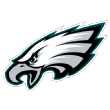
Jalen Reagor, WR, TCU | Highlights
Why they picked him: The Eagles wanted to add a speed receiver to an offense that lacked explosiveness in 2019 once DeSean Jackson was lost to injury. His 4.47 40-yard time at the scouting combine does not reflect how quick Reagor is on the field. Eagles quarterback Carson Wentz gets a big-play threat.
Biggest question: Reagor saw a drop in production last season because of spotty quarterback play. Justin Jefferson, the NCAA’s leader in receptions last season, was there for the taking, and CeeDee Lamb fell within striking distance. The Eagles go out on a bit of a limb by selecting the less accomplished Reagor — Tim McManus
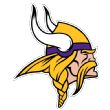
Justin Jefferson, WR, LSU | Highlights
Why they picked him: This is one of the deepest wide receiver classes in NFL history with five players who have a Scout’s Inc. grade more than 90, which is defined as a “rare prospect” who is usually considered a first-rounder. Jefferson is one of those players, and his stock had been rising considerably over the past few weeks. When Philadelphia passed over the LSU star wideout for TCU’s Jalen Reagor one spot before the Vikings picked at No. 22, Minnesota jumped at the opportunity to take the best slot receiver in the draft while not having to give up any picks to do so. One of the Vikings’ top priorities is replacing receiver Stefon Diggs, and they took a step toward filling that with the pick they received by trading Diggs to Buffalo. Minnesota could have waited until Day 2 to address its needs at wideout, but the way the board came together ahead of when the team picked in the early 20s allowed the Vikings to push off their needs at cornerback and offensive tackle until later in the draft. Just three picks later, Minnesota traded back from No. 25 and received three picks from San Francisco: Nos. 31, 117 and 176.
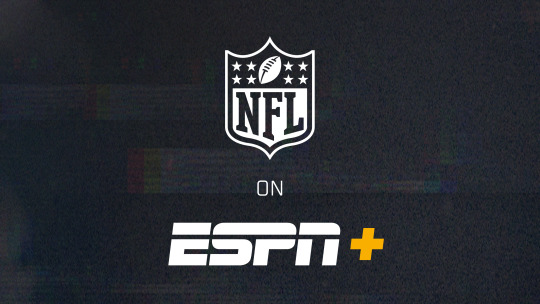
Relive the NFL’s greatest games, original series and more. Watch on ESPN+
Biggest question: Jefferson lined up primarily inside at LSU with 110 of his 111 receptions in 2019 (a school record) coming from the slot resulting in 17 touchdowns. Is that where Minnesota plans to use him most often, and what does that mean for where offensive coordinator Gary Kubiak wants to line up Adam Thielen? Jefferson is an explosive intermediate target and will give quarterback Kirk Cousins plenty of options as a middle-of-the-field threat, which could allow Thielen to line up more frequently on the outside. The LSU product uses his contested-catch ability in crucial situations to move the chains, having converted 63% of his third-down targets, which was tied for the fifth most in FBS last season. — Courtney Cronin

Kenneth Murray, ILB, Oklahoma | Highlights
Why they picked him: It was widely expected that the Chargers would be on the lookout for an inside linebacker, though it was not anticipated that they would trade up to acquire a second first-round pick in order to select one. Before the draft, Chargers general manager Tom Telesco acknowledged the versatility of Drue Tranquil and Nick Vigil, but depth remained a concerned after the release of Thomas Davis and Jatavis Brown’s departure in free agency. Murray had 17 tackles for a loss in 2019 at Oklahoma, which was tied for fourth in the Big 12 Conference. He should contend immediately for a significant role.
Biggest question: The Chargers struggled last season to stop the run, allowing 1.9 yards per rush after contact, the third worst in the NFL. Last season at Oklahoma, Murray had 22 run stops, tied for the 12th most in the FBS and second in the Big 12. The biggest question is how quickly he can adapt to the NFL, with an emphasis on gaining strength and recognizing offensive tendencies so he can quickly make an impact. — — Lindsey Thiry

Cesar Ruiz, C, Michigan | Highlights
Why they picked him: This isn’t a “sexy” pick, but it’s actually the one position coach Sean Payton identified by name as a draft need. Either Ruiz or standout 2019 rookie Erik McCoy could move to right guard as an eventual replacement for Pro Bowler Larry Warford, who is heading into the final year of his contract. It’s also not out of the question that the Saints shop Warford.
Biggest question: Should the Saints have put more of a priority on a wide receiver, linebacker or edge rusher who could help them win a Super Bowl in 2020? The Saints seem to be “all-in” with 41-year-old QB Drew Brees and 30-something free-agent signings Emmanuel Sanders and Malcolm Jenkins. But it’s hard to doubt the Saints’ history of O-line investments. — Mike Triplett
Brandon Aiyuk, WR, Arizona State | Highlights
Why they picked him: There was never any doubt the 49ers were going to take a wideout early after losing veteran Emmanuel Sanders to the New Orleans Saints in free agency. With five receivers already off the board, the Niners pulled a surprise and moved up to land Aiyuk, who they believe brings the type of route running and versatility they received from Sanders. Aiyuk should have a chance to come in and start opposite Deebo Samuel and work as a downfield threat for quarterback Jimmy Garoppolo, who attempted the fewest passes of 20-plus air yards in the NFL in 2019.
Biggest question: Can Aiyuk be a difference-maker right away? The Niners are in the middle of their Super Bowl window and they need someone to help step in for Sanders and replace at least part of his production. Without a full offseason program, making an impact immediately figures to be difficult for any rookie, particularly at wide receiver, where Aiyuk will have a lot to learn in coach Kyle Shanahan’s complex offense. — Nick Wagoner

26. Green Bay Packers (from the Houston Texans via the Miami Dolphins)
Jordan Love, QB, Utah State | Highlights
Why they picked him: Because general manager Brian Gutekunst knew from the day he took the job in 2018 that his job would be to find the next franchise quarterback. And Gutekunst, having worked under both Ron Wolf (who traded for Brett Favre) and Ted Thompson (who drafted Aaron Rodgers), knows it is better to take the right quarterback early than wait and miss out and search and search for a replacement. In fact, Gutekunst said in February, “Everything I’ve been taught, that’s where you start, you start with the quarterback, so you evaluate them every year, and I think it’s always on the table. It’s a good crop this year, it’s a good group of quarterbacks. I think it’s a little deeper than it has been in the past. It will be interesting. But yeah, sure.”
Biggest question: How will Rodgers react? Not only did the Packers not get Rodgers an offensive star in the first round — and Rodgers watched division-rival Minnesota take receiver Justin Jefferson at No. 22 — but they didn’t get a player who will help Rodgers immediately. Brett Favre didn’t exactly welcome Rodgers when the Packers picked him in 2005, although their relationship improved in the three years that Rodgers was the backup. Now Rodgers will have to decide whether he will freeze out Love or help him. Also, why did Gutekunst trade up to take Love? Couldn’t he have gotten him at No. 30? — Rob Demovsky

Jordyn Brooks, ILB, Texas Tech | Highlights
Why they picked him: The Seahawks’ defensive issues last season went beyond their pass rush, and in Seattle’s eyes there wasn’t an edge rusher worth taking at No. 27 once K’Lavon Chaisson went off the board at No. 20. Penn State’s Yetur Gross-Matos or Iowa’s AJ Epenesa might be in play for Seattle if they’re around in Round 2. LB K.J. Wright will be 31 in July and is entering the final year of his contract, while Bruce Irvin seems like a short-term fix at the other linebacker spot, so the Seahawks had long-term uncertainty on either side of All-Pro Bobby Wagner.
Biggest question: Is Brooks better than LSU’s Patrick Queen, who went one pick later? ESPN’s Todd McShay had Queen rated as his No. 1 inside linebacker, while Brooks, for what it’s worth, wasn’t listed in McShay’s top 10 for inside or outside linebackers. And where will Brooks play? His size (6 feet, 240) and speed (5.54) suggest the weak side — where Wright starts — is more likely. He was plenty productive in college as a four-year starter who led his team with 108 tackles last season, including 20 for loss and three sacks. — Brady Henderson

Patrick Queen, ILB, LSU | Highlights
Why they picked him: Middle linebacker was the Ravens’ most glaring need after Baltimore tried to fill the void of losing four-time Pro Bowl defender C.J. Mosley with a rotation inside last season. Queen doesn’t look or play like Mosley, but he fits as the centerpiece of a defense that prides itself on position flexibility. Ravens general manager Eric DeCosta said before the draft that the inside linebacker position has changed because the NFL has morphed into more of a speed league, in which defenders have to run, cover and blitz. No one epitomizes this modern-day definition of a middle linebacker more than Queen, the Defensive Most Valuable Player in the national championship game.
Biggest question: Is Queen too undersized to play middle linebacker? Queen weighed in at 229 pounds at the combine, which is considerably smaller than the players who had previously manned the middle of the Ravens’ defense (Lewis played at 240 pounds and Mosley is 250 pounds). For a defense that got bullied by Derrick Henry in an upset playoff loss, adding a safety-sized middle linebacker doesn’t seem like the perfect answer. Queen’s response: “I have the heart to be able to stop the run.” — Jamison Hensley

Isaiah Wilson, OT, Georgia | Highlights
Why they picked him: The Titans selected Wilson as a long-term option to take over at right tackle. Titans general manager Jon Robinson typically likes big players who can move. Right tackle Jack Conklin moved on via free agency, creating a void along the offensive line. Tennessee’s offense revolves around the running game, which is a good match for Wilson, who played in a heavy run scheme at Georgia.
Biggest question: At 6-foot-7, 350 pounds, Wilson had to work to keep his weight down while he was at Georgia, so that will be something for Tennessee to monitor as he works with the Titans’ strength and conditioning staff. — Turron Davenport

30. Miami Dolphins (from the Green Bay Packers)
Noah Igbinoghene, CB, Auburn | Highlights

31. Minnesota Vikings (from the San Francisco 49ers)
Jeff Gladney, CB, TCU | Highlights
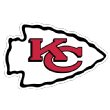
Clyde Edwards-Helaire, RB, LSU | Highlights
Why they picked him: The Chiefs have depth at running back but nobody quite like Edwards-Helaire. He won’t have to come in and shoulder a massive offensive load since the Chiefs also have Damien Williams, Darrel Williams, DeAndre Washington and Darwin Thompson at running back. But the Chiefs will put Edwards-Helaire’s versatility to good use. If he proves himself early as a pass protector, he could immediately be the third-down back and possibly more.
Biggest question: Why Edwards-Helaire instead of another back such as Wisconsin’s Jonathan Taylor or Georgia’s D’Andre Swift? At 5-7, 207 pounds, Edwards-Helaire isn’t built for every-down duty. That’s not to say the Chiefs won’t put him to good use, but it’s difficult to picture him becoming what Jamaal Charles or Kareem Hunt were for the Chiefs, a regular featured back. — Adam Teicher
Source link
Tags: 2020, 2020 NFL draft, Cincinnati Bengals, daily, Detroit Lions, draft, live, NFL, nfl draft, NFL Nation, pros and cons, updates, Washington Redskins
from WordPress https://ift.tt/2KyB2Fu
via IFTTT
0 notes
Photo
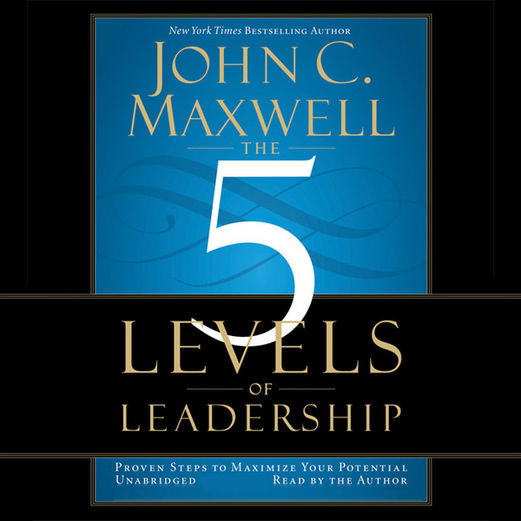
The 5 Levels of Leadership: Proven Steps to Maximize Your Potential (Unabridged) - John C. ...
2 notes
·
View notes
Photo

The 5 Levels of Leadership: Proven Steps to Maximize Your Potential (Unabridged) - John C. ...
2 notes
·
View notes
Photo
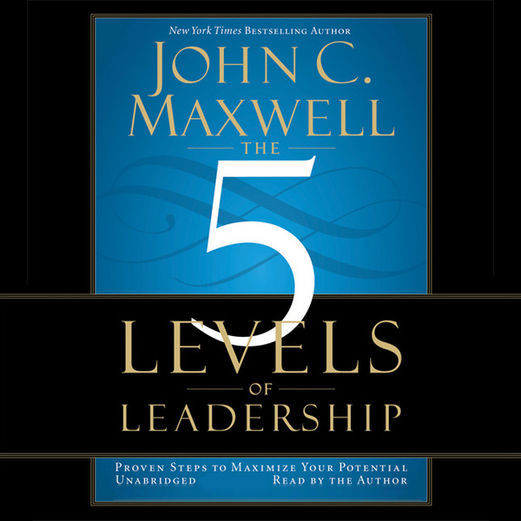
The 5 Levels of Leadership: Proven Steps to Maximize Your Potential (Unabridged) - John C. ...
1 note
·
View note
Photo

The 5 Levels of Leadership: Proven Steps to Maximize Your Potential (Unabridged) - John C. ...
1 note
·
View note
Photo
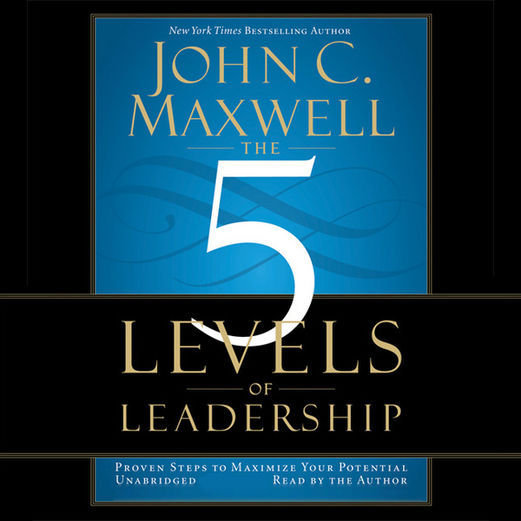
The 5 Levels of Leadership: Proven Steps to Maximize Your Potential (Unabridged) - John C. ...
1 note
·
View note
Photo
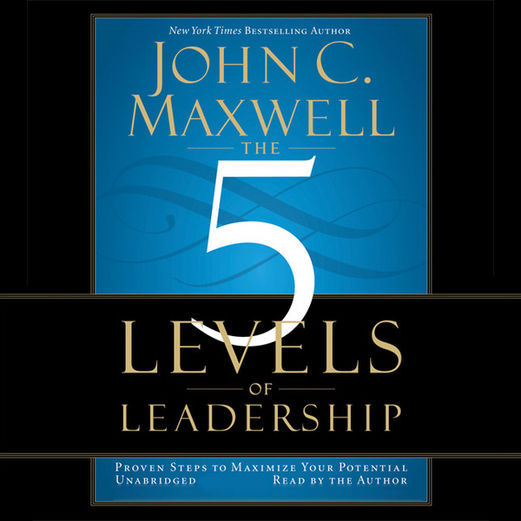
The 5 Levels of Leadership: Proven Steps to Maximize Your Potential (Unabridged) - John C. ...
1 note
·
View note
Text
3 Reasons Why Sales Managers Don't Coach
Reason 1. They're Focused on Selling, Not Coaching
Because many sales managers rose through the ranks to become the "uber" salesperson in their company, their instincts are always to go after the big deals. They have never been trained on the sales management skills needed to develop an elite sales team. So they do what they feel comfortable doing and what they have become very good at: selling. They see something going wrong (or at least not going well) in a sale and they step in to "fix" the problem for the sales rep.
This fix-it-myself mentality may solve an immediate problem (no guarantee) but even if it helps close one sale, it has serious downsides in the long run.
It undermines the salesperson's credibility with the customer when the boss intervenes. Why would the customer ever want to do business with the salesperson knowing that the real power lies with the boss.
It undermines the salesperson's self-confidence. Not good.
It does nothing to help the salesperson improve their skills. "Sales interference" from the sales manager just makes it more likely the problem will recur the next time around.
As a sales manager, one of the kindest things you can do for your people is to not be there for them. If a rep asks you a question, respond with a question: "What have you done about it so far? What do you think ought to be done?" Involving your salespeople in solving their own problems is what will break the cycle of constant need. That is what will help them develop their own skills so they become more accountable.
In short, stop seeing yourself as a problem solver, and start seeing yourself as a solution facilitator.
Reason 2. They Under-appreciate the Need for Coaching
A lot of stellar salespeople are building on natural talents and instincts. They needed only minimal coaching to reach the elite levels. When they become sales managers, they don't pay much attention to coaching because they never needed (or received) much coaching themselves. They leave inexperienced sales people to sink or swim on their own, expecting their reps to pick up good techniques through osmosis, just like they did. They don't recognize that coaching could be a way to break an experienced salesperson out of a slump or rut.
Think about how you spent your time over the last week, the last month. How much of it was spent helping your reps develop their skills or think through what they need to do to move a client forward in the buying process? If you can't answer at least 50%, you are mis-spending your time as a manager. (See the next point.)
Reason 3. They Don't Have the Time
Recently I was retained by a Fortune 500 company to examine their job description for the sales manager position. Fully 85 percent of the duties were directly linked to coaching salespeople. (I've reviewed many sales manager job descriptions over the years, and this was one of the better ones.)
I then conducted face-to-face interviews with a number of the sales managers and found that less than 5 percent of their time was actually spent on coaching. Five percent! Another way to say this is that sales managers were spending 95 percent of their time focused on 15 percent of their job responsibilities. Why such waste?
One big reason was that these sales managers were spending three hours each day responding to about 150 emails, virtually none of which came from their sales team. And that's not counting all the meetings, paperwork, and fire fighting. The list of "urgencies" for sales managers today is endless.
With all the distractions sales managers face, the first thing to go out the window is developmental coaching-time spent helping their salespeople improve their skills (not just closing one sale). They haven't observed the salesperson selling, or intervened at key points of the sales process, so when a sales rep is 75 percent of quota, they're not sure why.
The solution? Start by stopping unproductive interruptions. Make a list of the top five interruptions you experience and come up with specific steps you'll take to minimize their disruptions to your workday. Maybe it's turning off the your Smartphone, or closing your office door, or simply ignoring that little "you've got mail" sound from your computer. Maybe it's a salesperson who is "Needy."
Next, take just 30 seconds to quickly write down your top three goals for your sales team. Then take a few minutes to identify the six tasks that you as a manager need to be doing, day in and day out, to help your team achieve those three goals? For lack of a better label, let's call this your "3-6-No List." Carry this list with you throughout the day. If anything comes up that's not related to what's on this list Just Say No. Yes, that's going to be hard at first. Most sales managers are unwilling to say no. But you need to spend the vast majority of your time working on either sales development or business development tasks, and anything that eats into that time is a very low priority.
High-Leverage Coaching
Based on my contact with thousands of sales managers over the past 30 years, one of the most common mistakes I see is sales managers who spend most of their time with either their poorest performers or their top producers.
Focusing on the poorest performers is misguided. Suppose your coaching efforts result in a 10% increase in production amongst your bottom-producers. How much better off are your numbers? Not much.
Focusing your one-on-one coaching time on your top performers also is misguided. How much of a difference can you really make in their sales effectiveness? Should you talk to them about their career goals? Absolutely. Recognize them for their valuable contributions to the team? Yes, for sure. But don't spend all your hands-on sales coaching time with them because they have less room for improvement.
The solution is to steal a lesson from the medical profession and "triage" your sales team. Chances are, your peak performers and highly experienced/tenured people will survive regardless of how much time you spend with them. Praise and recognize them - continue to motivate them - but don't spend precious hours with them in the field conducting one-on-one coaching sessions.
The same is true in reverse with your bottom performers: chances are they won't make it, so why give them all of your time. (Come to think of it, why are they still on your team?) But you can't ignore them. It's the middle performers who have potential to become high performers that deserve most of your attention.
Therefore, the high-payoff strategy is: Spend group time with your bottom producers. Spend most of your precious one-on-one field coaching time with your "emerging contributors" - those salespeople who have the best chance to develop into peak performers, if they could learn what you know.
This strategy of focusing on your emerging contributors can pay you multiple benefits in your sales management career. You may start to see emerging contributors sprint past your senior salespeople! Another benefit is that you'll have more top producers, so the gap to the bottom producers will widen. The bottom producers who are committed to survival will fight harder to pull up their production.
No More Excuses
There are many similarities between selling customers and coaching salespeople. Both require understanding another's problems, diagnosing the cause of that problem and helping the other person to understand the complications/ripple effects if they don't solve the problem. Sales managers already possess many of the abilities that they need to become a great sales coach-but habits or misconceptions have prevented sales managers from utilizing these skills to develop an elite high-performance sales team.
For those sales managers who want to become a better sales coach, the implication is clear. You can't achieve that simply by learning how to coach. Your solution must also solve the obstacles that prevent proactive, hands-on sales coaching from actually happening.
Kevin Davis is president of TopLine Leadership, Inc., a leading sales and sales management training company serving clients in diverse sectors. He has 30+ years experience as a salesperson, sales manager, and consultant. Kevin is the author of "Slow Down, Sell Faster! Understand Your Customer's Buying Process and Maximize Your Sales" (Amacom Books, January, 2011).
As the president and founder of TopLine Leadership, my company provides sales management training for corporate sales managers, and we provide customer-first sales training. Our training programs are systematic, proven and customizable.
We're experienced in delivering our programs and services to a number of different industries, some of which are financial services, telecom, tech, transportation services, medical equipment, business services and staffing.
We have an efficient method for helping our clients define their "standards for excellence" - the behaviors and activities necessary to achieve greatness - and then we customize our training programs so as to teach the skills and knowledge salespeople and sales managers need to achieve their new standards. Results can't be managed effectively, but behaviors and activities can.
At TopLine Leadership, we deliver 2-day sales seminars for sales managers and sales people through customer centric selling and Getting Into Your Customer's Head solutions. Our team of professionals include: Kevin Davis, Tom Gundrum, Thomas Cooke, Gary Connor and Kim D. Ward.
We specialize in sales management training, sales training and business consulting for a wide-range of clients.
Article Source: Ezine Articles
1 note
·
View note